| Dan Howard wrote: |
| A civilian wearing any kind of armour around most towns back then would have garnered the same reaction as if you walked into Pizza Hut wearing ballistic armour today. If you were involved in a fight and you were wearing armour then the authorities would automatically assume that your actions were pre-meditated regardless of who really started it. Another reason why civilian armour was not permitted was because the authorities assume that you are not wearing it for self-defense but to make it harder for them to apprehend you when you commit a crime. |
http://en.wikipedia.org/wiki/L'homme_arm%C3%A9
L'homme, l'homme, l'homme armé,
L'homme armé
L'homme armé doibt on doubter, doibt on doubter.
On a fait partout crier,
Que chascun se viengne armer
D'un haubregon de fer.
The man, the man, the armed man,
The armed man
The armed man should be feared, should be feared.
Everywhere it has been proclaimed
That each man shall arm himself
With a coat of iron mail.
L'homme, l'homme, l'homme armé,
L'homme armé
L'homme armé doibt on doubter, doibt on doubter.
On a fait partout crier,
Que chascun se viengne armer
D'un haubregon de fer.
The man, the man, the armed man,
The armed man
The armed man should be feared, should be feared.
Everywhere it has been proclaimed
That each man shall arm himself
With a coat of iron mail.
When looking at the pictures of Eric Schmid's mail and the historical examples, I have noticed that the rings look to be flattened quite differently than the Indian made rings I have worked with before. Compared to these modern rings, Erik's rings look to be less flattened around the ring and on the overlap itself. The overlaps seem to transition smoothly from the wire without an obvious hammer mark to them, yet the overlaps are flattened more than the rest of the ring. All told, it's a noticeable difference from modern machine made Indian mail.
My question is this: how does Erik go about flattening his rings to look this way? As in, does he have the rings pre-overlapped or not, what kind of hammer does he use, and does he use a piston or anything like that? I have tried on several occasions to make mail from scratch using pre-annealed 16g wire, but the flattening has never worked out for me. Either the overlaps come undone when struck or the ring isn't flattened right so it turns into a pancake. I also have issues with uneven flattening, so while Erik's rings have uniform width all around mine get flattened more in some areas than others. Is there anyone here with experience with this, maybe Erik himself or someone who does this too that could point me in the right direction? Do I need to anneal my wire some more, get a different size hammer, strike at a certain angle, or something else? I'd really appreciate being able to craft mail by knowing the vital process of flattening the rings correctly.
My question is this: how does Erik go about flattening his rings to look this way? As in, does he have the rings pre-overlapped or not, what kind of hammer does he use, and does he use a piston or anything like that? I have tried on several occasions to make mail from scratch using pre-annealed 16g wire, but the flattening has never worked out for me. Either the overlaps come undone when struck or the ring isn't flattened right so it turns into a pancake. I also have issues with uneven flattening, so while Erik's rings have uniform width all around mine get flattened more in some areas than others. Is there anyone here with experience with this, maybe Erik himself or someone who does this too that could point me in the right direction? Do I need to anneal my wire some more, get a different size hammer, strike at a certain angle, or something else? I'd really appreciate being able to craft mail by knowing the vital process of flattening the rings correctly.
| Jonathon Hanson wrote: |
| When looking at the pictures of Eric Schmid's mail and the historical examples, I have noticed that the rings look to be flattened quite differently than the Indian made rings I have worked with before. Compared to these modern rings, Erik's rings look to be less flattened around the ring and on the overlap itself. The overlaps seem to transition smoothly from the wire without an obvious hammer mark to them, yet the overlaps are flattened more than the rest of the ring. All told, it's a noticeable difference from modern machine made Indian mail.
My question is this: how does Erik go about flattening his rings to look this way? As in, does he have the rings pre-overlapped or not, what kind of hammer does he use, and does he use a piston or anything like that? I have tried on several occasions to make mail from scratch using pre-annealed 16g wire, but the flattening has never worked out for me. Either the overlaps come undone when struck or the ring isn't flattened right so it turns into a pancake. I also have issues with uneven flattening, so while Erik's rings have uniform width all around mine get flattened more in some areas than others. Is there anyone here with experience with this, maybe Erik himself or someone who does this too that could point me in the right direction? Do I need to anneal my wire some more, get a different size hammer, strike at a certain angle, or something else? I'd really appreciate being able to craft mail by knowing the vital process of flattening the rings correctly. |
You know Jonathon, I have had many of these same questions myself. All I remember reading about Erik is that he uses a hammer, and that he doesn't quite understand why people use pistons. What I have noticed about hammers is that most of them have a slightly curved surface, so unless you make or buy a hammer with a flush head I don't think just any hammer would do. I also don't know whether they should be flattened first and THEN overlapped, but my experiments so far have shown that this may not be necessary. If the rings are soft enough the ends of the overlap just seem to stick together. However, because mail was traditionally made from wrought iron and not mild steel, I do not know if this would have affected the process. Of course, mail was made for so long across so many cultures, I doubt that there was a single way of doing it.
Also, I know why you may be having trouble with your rings...even though you are using pre-annealed wire, the coiling and cutting of the rings work-hardens them enough as to require another annealing BEFORE you attempt to flatten. Try stringing the cut rings on a length of wire and annealing with a torch. Once they are cool give them another try, I think you'll find that the overlaps "stick" together much more consistently.
Also, Eric, thanks again for the pinterest page btw. Where did you find such a collection of pictures!?
Have you noticed that most of them are either High/Late Medieval or Roman, with very few being from 0 - 1000 a.d.? I wondered at first if this was due to the older Medieval mail simply having corroded away, but that doesn't seem to make sense considering there are also examples of Roman mail.
Have you noticed that most of them are either High/Late Medieval or Roman, with very few being from 0 - 1000 a.d.? I wondered at first if this was due to the older Medieval mail simply having corroded away, but that doesn't seem to make sense considering there are also examples of Roman mail.
| Stanley Hauser wrote: |
| Also, Eric, thanks again for the pinterest page btw. Where did you find such a collection of pictures!?
Have you noticed that most of them are either High/Late Medieval or Roman, with very few being from 0 - 1000 a.d.? I wondered at first if this was due to the older Medieval mail simply having corroded away, but that doesn't seem to make sense considering there are also examples of Roman mail. |
It is logical that there is much more Roman mail than early medieval. Romans equipped whole units with mail and early medieval kingdoms couldn't afford that and only the richer warriors wore mail...
| Stanley Hauser wrote: |
| Also, Eric, thanks again for the pinterest page btw. Where did you find such a collection of pictures!?
|
Considering how long mail was in use in and how much if it must have been made over hundreds of years, there are surprisingly few images available and even fewer clear, close up images. If any forum member has some personal images of mail from any culture or interesting links to images that they would like to share this would be a good place to do it.
I have added a lot more images since I first posted this gallery here.
http://www.pinterest.com/samuraiantiques/european-mail-armor/
Tangentially related to this, does anyone know if the either picture is supposed to be mail over plate? Are there any extant mail coats made to be worn so/tailored to perhaps fit over a breastplate? Additionally, do the images attached seem to indicate that liner-less mail was taken off in part by turning it inside out like a kid with a t-shirt?
Am I way off base here?
 Attachment: 37.7 KB
Attachment: 37.7 KB
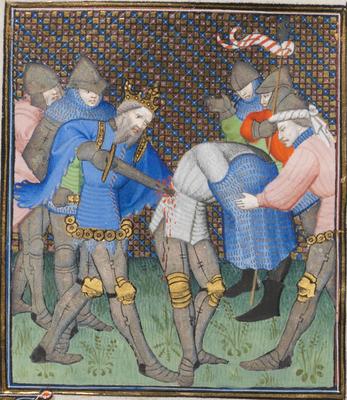
 Attachment: 163.75 KB
Attachment: 163.75 KB
[ Download ]
Am I way off base here?

[ Download ]
| Kai Lawson wrote: |
| Tangentially related to this, does anyone know if the either picture is supposed to be mail over plate? Are there any extant mail coats made to be worn so/tailored to perhaps fit over a breastplate? Additionally, do the images attached seem to indicate that liner-less mail was taken off in part by turning it inside out like a kid with a t-shirt?
Am I way off base here? |
The first picture seems to depict a mail coat being worn over a gambeson, but I can see why you think it may be a breastplate.
As for the second picture, I think it is entirely possible that artists of the time may not have completely understood the workings of armor and may have taken liberties in their depictions. The depiction may also be an anachronism of an earlier period.
I think it is much more likely, though not necessarily likely, that breastplates were worn over mail, or at least something like a jack of plates.
| Kai Lawson wrote: |
| Tangentially related to this, does anyone know if the either picture is supposed to be mail over plate? Are there any extant mail coats made to be worn so/tailored to perhaps fit over a breastplate? Additionally, do the images attached seem to indicate that liner-less mail was taken off in part by turning it inside out like a kid with a t-shirt?
Am I way off base here? |
Context, Kai, context.
The first image is Artaxerxes assassinates Artabanus from Geneva, Bibliothèque de Genève, Ms. fr. 190/1 fol 104 (mythical tales of ancient history, in this case from Persia)
Men pull the armour off Artabanus while he his stabbed. Pretty clear concept that a sword isn't certain to penetrate mail armour of the period. Aketons... not so much.
The second image is from the Book of the Queen written by Christine de Pizan.
(Harley 4431 http://www.bl.uk/catalogues/illuminatedmanusc...tart=4431)
It depicts a messenger from Heaven doling out arms and armour to worthy men. The man in full plate has just received a mail haubergeon while others are given helmet, shield et cetera.
Not so hard to figure out once you know what the image portays.
Cheers!
| Kai Lawson wrote: |
| Additionally, do the images attached seem to indicate that liner-less mail was taken off in part by turning it inside out like a kid with a t-shirt? |
Unlined mail hauberks can be removed in one of two ways: First, you can pull the neckline over your head and then shimmy to shake the mail off your body as you lean forward.
[ Linked Image ]
The second method has someone else roll it off by turning it inside out.
[ Linked Image ]
| Benjamin Floyd II wrote: |
| Here's a few I've taken in Sweden: |
[ Linked Image ]
[ Linked Image ]
That looks quite a bit like Russian made baidana with the larger rings that are relatively flat. Could be from other spots in Europe though, I wouldn't doubt similar stuff was used elsewhere that was not as high quality as the rest of maille. I do believe when they sold maille in Europe they had bigger ringed stuff that was of lower quality similar to how stuff is sold today.
Some good stuff here http://livinghistory.cz/node/155
| S. Sebok wrote: |
| That looks quite a bit like Russian made baidana with the larger rings that are relatively flat. Could be from other spots in Europe though, I wouldn't doubt similar stuff was used elsewhere that was not as high quality as the rest of maille. I do believe when they sold maille in Europe they had bigger ringed stuff that was of lower quality similar to how stuff is sold today. |
It looks like baidana or very similar, its hard to tell but the one in Benjamin's photo seems to have a border of solid brass links. Here is 16th century Russian hauberk constructed with baidana.
[ Linked Image ]
[ Linked Image ]
Here's my method for flattening.
1. Squeeze ring into an oval.
2. Pre-flatten the butted half of the ring only.
3. Overlap ends about a 1/4 inch.
4. Finish flattening.
You can leave the wire round or flatten the entire ring. I use a small hammer that I filed the face flat.
The point behind the oval shape before pre-flattening is that the ends are in line, making it easy to squeeze together for the final flattening.
1. Squeeze ring into an oval.
2. Pre-flatten the butted half of the ring only.
3. Overlap ends about a 1/4 inch.
4. Finish flattening.
You can leave the wire round or flatten the entire ring. I use a small hammer that I filed the face flat.
The point behind the oval shape before pre-flattening is that the ends are in line, making it easy to squeeze together for the final flattening.
| Len Parker wrote: |
| Here's my method for flattening.
1. Squeeze ring into an oval. 2. Pre-flatten the butted half of the ring only. 3. Overlap ends about a 1/4 inch. 4. Finish flattening. You can leave the wire round or flatten the entire ring. I use a small hammer that I filed the face flat. The point behind the oval shape before pre-flattening is that the ends are in line, making it easy to squeeze together for the final flattening. |
Here are two more Pinterest galleries, one for Japanese mail and one for Indo-Persian mail.
http://www.pinterest.com/samuraiantiques/japa...or-kusari/
http://www.pinterest.com/samuraiantiques/indo-persian-mail-armor/
Japanese riveted mail.
[ Linked Image ]
Indian theta link mail.
[ Linked Image ]
http://www.pinterest.com/samuraiantiques/japa...or-kusari/
http://www.pinterest.com/samuraiantiques/indo-persian-mail-armor/
Japanese riveted mail.
[ Linked Image ]
Indian theta link mail.
[ Linked Image ]
Jonathon, you can make the overlap like you prefer. I use piston and I don’t know make it with hammer. I don´t need to anneal the wire now, I do it when I punch the ring. But yes, If you anneal the ring before flatten, you will make it easier.
Pekka , wonderful mailmaker from Finland, use a modificated knipex plier.
The secret is don´t flat very much. . In my ring the overlap width is about 2 mm if I use 1'5 mm wire, so the difficult step is to pierce the ring. The finished ring has 2'5 mm overlap width or so.
I put photos with the piston ( made by Pekka),the modificated plier and the steps for round and flat rings, and finished rings ( some photo are old and I put it in the forum years ago)
More information in the http://groups.yahoo.com/neo/groups/rivetedmaille/info
The forum is almost dead but has great pictures and information.
Regards
Julio
 Attachment: 31.84 KB
Attachment: 31.84 KB
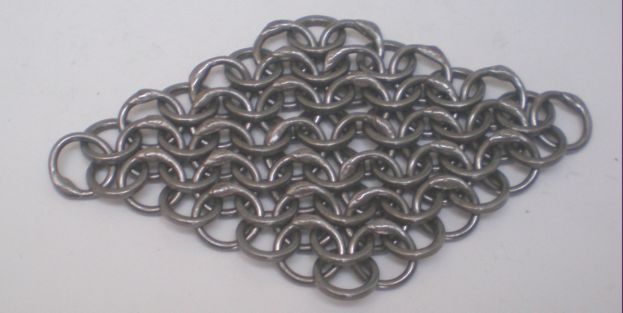
 Attachment: 51.55 KB
Attachment: 51.55 KB
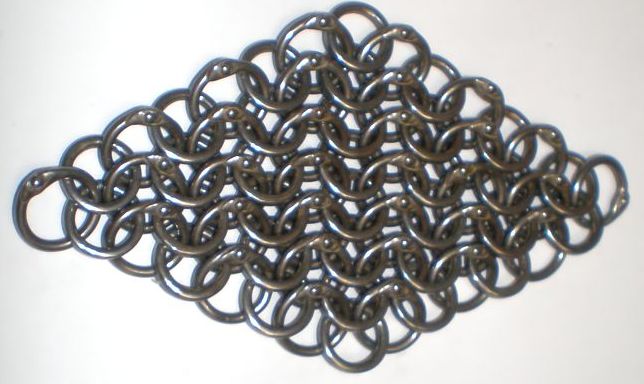
 Attachment: 8.43 KB
Attachment: 8.43 KB
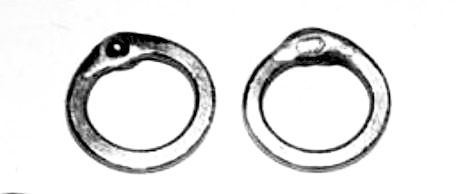
 Attachment: 72.34 KB
Attachment: 72.34 KB
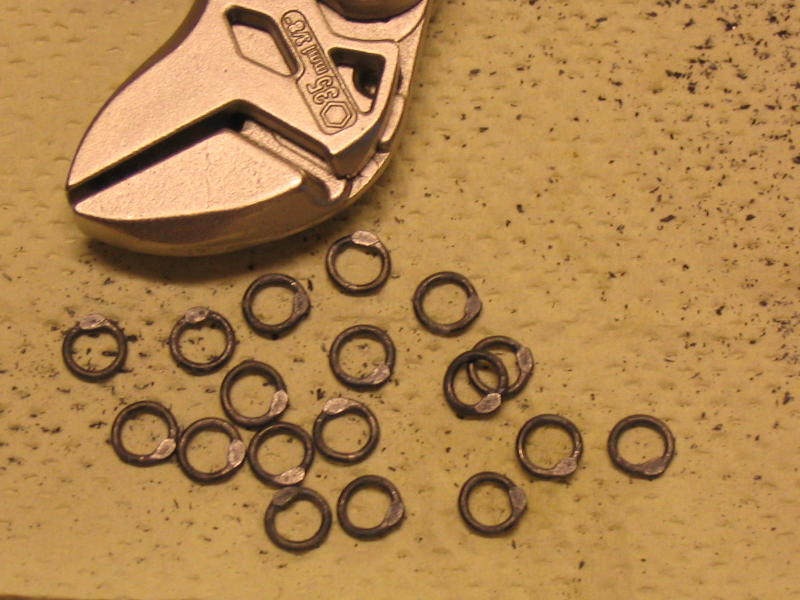
 Attachment: 20.36 KB
Attachment: 20.36 KB
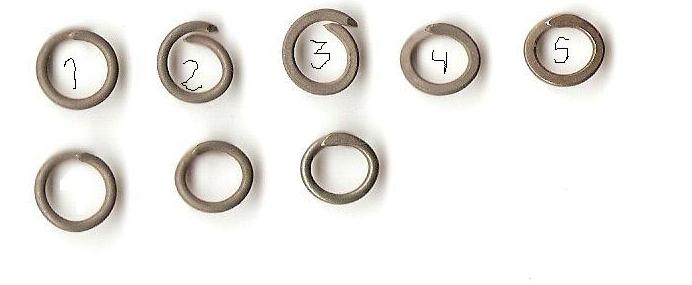
 Attachment: 13.24 KB
Attachment: 13.24 KB
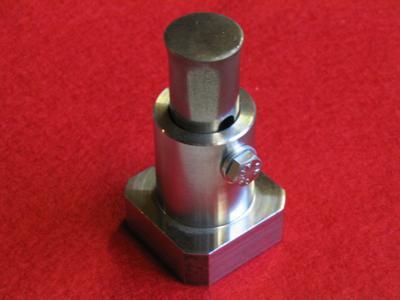
Pekka , wonderful mailmaker from Finland, use a modificated knipex plier.
The secret is don´t flat very much. . In my ring the overlap width is about 2 mm if I use 1'5 mm wire, so the difficult step is to pierce the ring. The finished ring has 2'5 mm overlap width or so.
I put photos with the piston ( made by Pekka),the modificated plier and the steps for round and flat rings, and finished rings ( some photo are old and I put it in the forum years ago)
More information in the http://groups.yahoo.com/neo/groups/rivetedmaille/info
The forum is almost dead but has great pictures and information.
Regards
Julio






Page 3 of 27
You cannot post new topics in this forumYou cannot reply to topics in this forum
You cannot edit your posts in this forum
You cannot delete your posts in this forum
You cannot vote in polls in this forum
You cannot attach files in this forum
You can download files in this forum
All contents © Copyright 2003-2006 myArmoury.com — All rights reserved
Discussion forums powered by phpBB © The phpBB Group
Switch to the Full-featured Version of the forum
Discussion forums powered by phpBB © The phpBB Group
Switch to the Full-featured Version of the forum